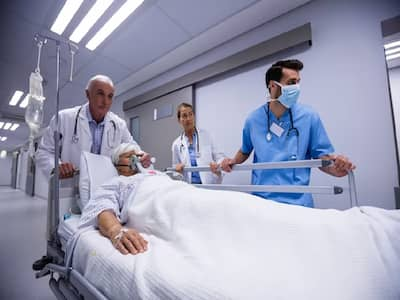
Sepsis continues to be the silent killer with over 11 million deaths worldwide every year.
In the realm of global health concerns, infectious diseases have often taken a center stage, given its scale of morbidity, socio-economic disruption and devastating potential, accounting for millions of deaths annually. Amidst the attention seeking pandemics and new age non communicable diseases demanding attention, sepsis a 2700-year-old enigma continues to be the silent killer with over 11 million deaths worldwide every year.
Sepsis Unveiled
Sepsis, a dysregulated immune response of the body to any infection, is a global threat. Sepsis can affect anyone, but people who are older, very young, pregnant or have other health problems are at higher risk. Bacterial infection is one of the major causes, but it can also be triggered by fungal, parasitic and viral infections. Some of the common symptoms include fever, hyperventilation, chills, low blood pressure, confusion, extreme pain or discomfort.
The Process
Anyone can get an infection and any infection can result in sepsis. Sepsis is the body’s disproportionate reaction to an infection, leading to a systemic inflammatory response that can result in multiple organ dysfunction, failure, damage to body tissues and ultimately death. The common primary sites of infection contributing to sepsis in descending order of frequency are lungs, intra-abdominal, genitourinary, primary bloodstream, skin bone and soft tissue. A localized infection may trigger the dysregulated immune response leading to widespread collateral damage to normal human tissue. This can lead to multi-organ damage.
The Global Impact
As per WHO report, in 2017 sepsis accounted for 48.9 million cases and 11 million sepsis-related deaths worldwide, which amounts to almost 20% of all global deaths. Coupled with the burden of antimicrobial resistance, deaths due to drug resistant infections can reach up to 10 million by 2050.
WHO 2020 global report on sepsis attributes it as the accelerator to mortality in the disease spectrum ranging from severe infectious diseases like invasive bloodstream infections, lower respiratory tract infections, diarrhoeal diseases, systemic fungal infections to malaria and dengue. According to the Center of Disease Control and Prevention, at least 350,000 adults who develop sepsis die during their hospitalization or are discharged to hospice and 1 in 3 people who die in a hospital had sepsis during that hospitalization. The limited healthcare infrastructure and diagnostic tools, and poor-resource settings is one of the major reasons for sepsis going unnoticed as a secondary consequence of other infectious diseases. Additionally, there is a lack of awareness around sepsis among both healthcare providers and the general public, leading to delay in appropriate treatments.
To combat the global impact of infectious diseases, it is important for the government and healthcare professionals to adopt a multifaceted approach which involves creating awareness about infection and its prevention, ensuring provisions for sanitation and hygiene, improving preventive strategies, improvising diagnostics and rational use of antimicrobials. The importance of timely medical care and early intervention under medical supervision needs to be emphasized. Furthermore, it is important for the adoption of technologies like genome sequencing, a one stop, hypothesis free diagnostic tool which has the potential for achieving timely and specific detection of deadly infectious diseases.
READ RELATED: High Cholesterol Symptoms In Men: 7 Ayurvedic Herbs To Flush Out Bad Cholesterol From Your Body
Path forward
Sepsis continues to confound the medical world bringing in its wake morbidity, mortality, economic instability and rising healthcare cost. The global impact of this condition extends far beyond physical suffering, affecting economies, education, and healthcare systems in all regions, more pronounced in the low- and middle-income countries. By raising awareness around infection and its prevention, the early symptoms, importance of seeking medical care, investing in research and fostering global collaboration for improvising diagnostic as well as preventive strategies, we can work towards a stronger healthcare system and reduce the overall burden of infections and the associated death rates.
The article is written by Dr Mahua Kapoor Dasgupta Director of Medical Affairs (Infectious Diseases), HaystackAnalytics.
Total Wellness is now just a click away.
Follow us on
Don’t Miss Out on the Latest Updates.
Subscribe to Our Newsletter Today!
window.addEventListener(‘load’, (event) => {
$(‘#commentbtn’).on(“click”,function(){
(function(d, s, id) { var js, fjs = d.getElementsByTagName(s)[0]; if (d.getElementById(id)) return; js = d.createElement(s); js.id = id; js.src = “//connect.facebook.net/en_US/sdk.js#xfbml=1&version=v2.3”; fjs.parentNode.insertBefore(js, fjs);}(document, ‘script’, ‘facebook-jssdk’));
$(“.cmntbox”).toggle();
});
});









